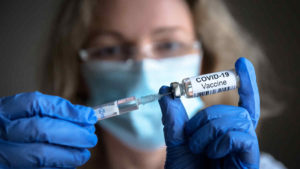The ongoing coronial inquest into the deaths caused by Dreamworld’s Thunder River Rapid ride has uncovered critical evidence that workplace safety teams across various industries can learn from. In particular, the inquest illustrates that clear communication of safety protocol and procedure is key.
What caused the WHS failure
In October 2016, electrical malfunctions caused the ride’s water levels to drop, in turn causing two rafts to collide and become caught on the rails, which dragged the rafts into the conveyor mechanism, leading to deaths of four people.
The evidence revealed by the inquest thus far exposes three major points of failure.
- The ride breakdown procedure Dreamworld had in place required a supervisor to be notified if the same malfunction occurs twice within 24 hours. When the water pump failed for the second time hours before the incident, the ride should have been closed, pursuant to that procedure. Instead, it was reset by an engineer and remained open.
- During the inquest, one of Dreamworld’s electricians stated that the water pump’s drive should have been reset by electricians, not engineers. The electrician stated that he would not have shown or let an engineer reset a ride’s pump due the electrical experience it requires. Despite this, cross-examination revealed that the engineer who reset the pump the second time, had been shown how to reset the pump’s drive, but had not previously done so for that ride.
- The third failure was that the ride operator stated that she was unaware of the emergency stop button which would have halted the ride within two seconds. Notwithstanding that, the ride operator’s trainer gave evidence that she did instruct the operator on that point.
Lessons to be learnt from the Dreamworld incident
Cost cutting
Sufficient allocation of resources to maintenance and safety has surfaced as a major issue following the inquest. The inquest heard evidence from an engineering management meeting in March 2016 which uncovered active efforts to cut costs, the minutes stating, “repairs and maintenance spending needs to stop”. The tragic outcome occurred seven months later and demonstrates the safety implications attached to maintenance systems must be carefully considered.
During the process of cost cutting, it is necessary to evaluate whether appropriate safety measures are being compromised due to resource redistribution. Essential operational functions require adequate financial support, ensuring the prioritisation of safety.
Clear direction and need for continuous training
The differing accounts of Dreamworld’s safety and maintenance procedures from various staff has highlighted the necessity of direction and procedure to be clear and apparent to all staff. Cross-department training and communication are important measures to ensure staff are aware of safety protocols.
The ride operator’s lack of knowledge in relation to the emergency stop button identifies the need for regular evaluation of training programs to ascertain whether the transference of knowledge between management and operators is effective. Assumptions in this context can be harmful.
The inquest resumes in October this year.
WHS managers have the responsibility of consistently monitoring safety procedures and policies and to ensure that any cost cutting measure do not degrade the performance of staff and equipment or increase safety risks.
If you have any questions relating to implementing effective workplace safety procedures please do not hesitate to contact Nick Stevens, Jane Murray or Angharad Owens-Strauss.




